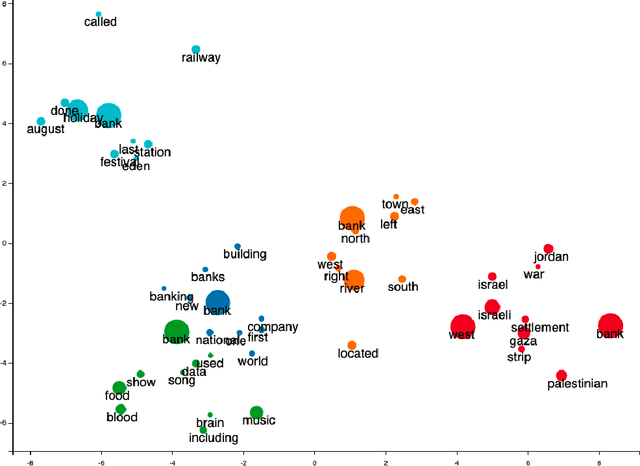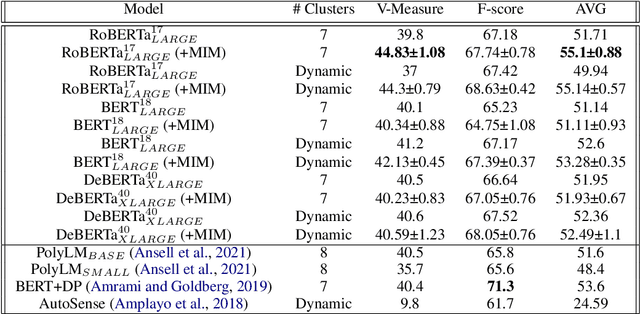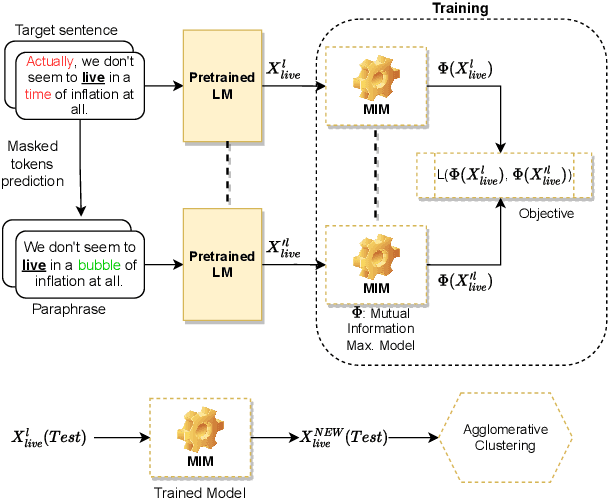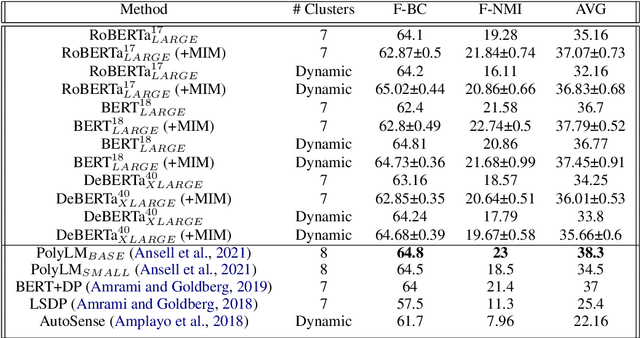Word Sense Induction with Hierarchical Clustering and Mutual Information Maximization
Paper and Code
Oct 11, 2022



Word sense induction (WSI) is a difficult problem in natural language processing that involves the unsupervised automatic detection of a word's senses (i.e. meanings). Recent work achieves significant results on the WSI task by pre-training a language model that can exclusively disambiguate word senses, whereas others employ previously pre-trained language models in conjunction with additional strategies to induce senses. In this paper, we propose a novel unsupervised method based on hierarchical clustering and invariant information clustering (IIC). The IIC is used to train a small model to optimize the mutual information between two vector representations of a target word occurring in a pair of synthetic paraphrases. This model is later used in inference mode to extract a higher quality vector representation to be used in the hierarchical clustering. We evaluate our method on two WSI tasks and in two distinct clustering configurations (fixed and dynamic number of clusters). We empirically demonstrate that, in certain cases, our approach outperforms prior WSI state-of-the-art methods, while in others, it achieves a competitive performance.
 Add to Chrome
Add to Chrome Add to Firefox
Add to Firefox Add to Edge
Add to Edge